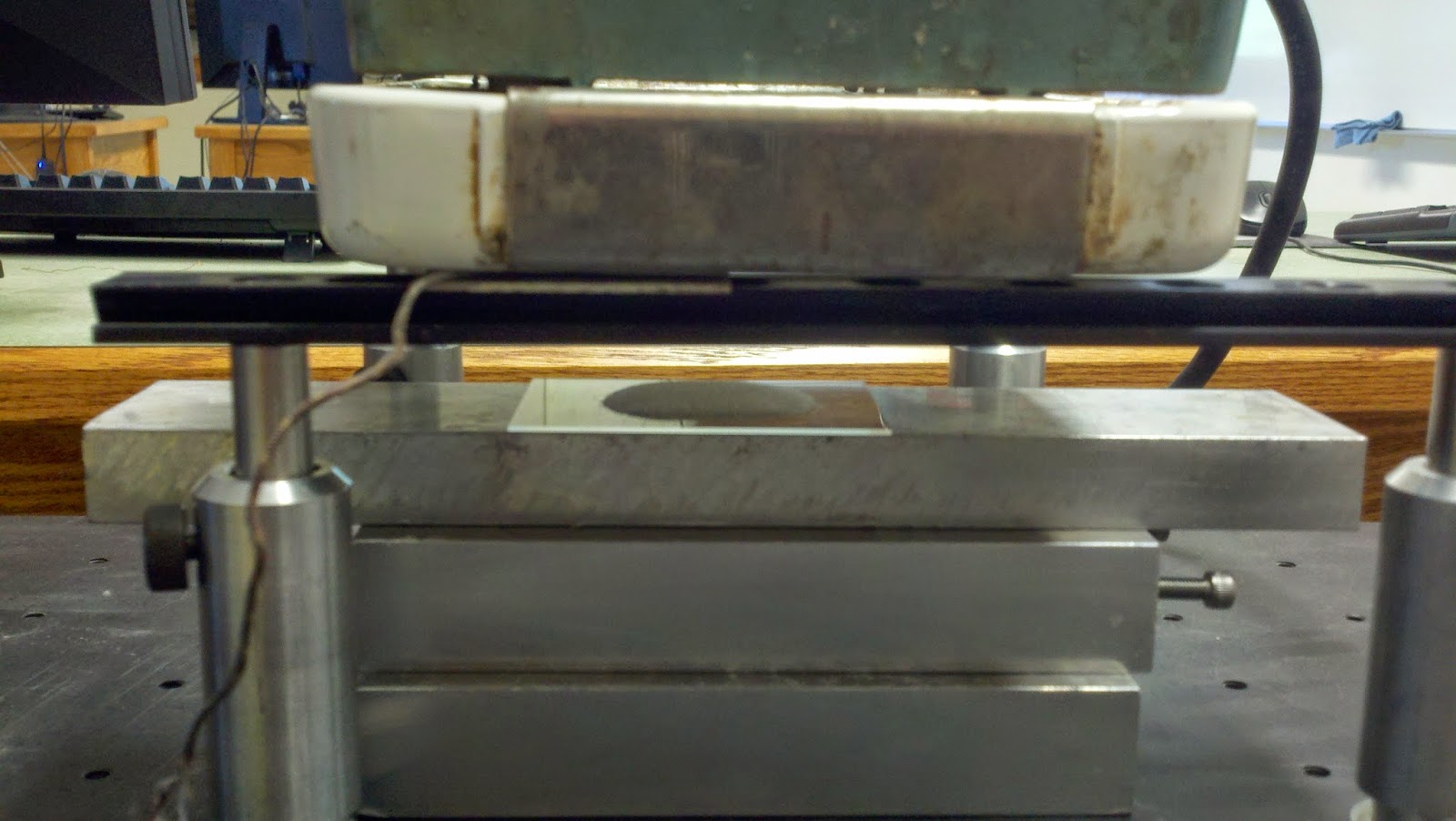 |
| Fig. 1. Sun-Cups in my back yard. Ruler gives the scale. |
I had another great student from the NATURE program help me for a week this summer. This year I was interested in creating artificial 'sun-cups' (see the picture). Sun-cups are an interesting pattern that occurs when snow is exposed to radiated heat (usually the sun, but sometimes this happens near a camp fire). Current models involve several details of how the snow melts, evapourates, and re-condenses. The simple version is that a bump makes a shadow, and in the shade it is cooler. The hot-cold asymmetry causes a pattern to arise. I was most curious about how particle sizes (snow crystals) fit into the process.
Alyssa Weasel helped me try to create a lab version of this pattern using poly (methyl methacrylate) (otherwise known as plexiglass) particles. She first used a spacer to make a controlled depth of particles (a few millimeters) on a clean glass substrate. She then heated the polymer in a few different ways. First, as a control, she heated the particles as one ordinarily cook an egg. She simply set the polymer on a hot-stage and heated it above its melting point. As one would expect, the particles melt and the result is a 'gob' of polymer.
 |
| Fig. 2. Our beautiful setup. Top is an upside down hot stage, bottom is several aluminum spacers. In the middle is a glass slide with some plexi-glass particles on top. |
Alyssa then took a similar sample and placed it on a metal spacer, underneath an upside-down hotplate (see figure 2). Now several things are different, firstly heat is not conducted through the substrate but must reach the polymer through the air. Secondly, radiative heating will also occur. Alyssa measured the temperature of the sample with a thermocouple to have some idea how hot it was (this is not perfect in our simple set-up).
 |
| Fig. 3. A 3D image of the polymer surface after heating. | |
|
|
| |
|
If a sample was close to the oven, it would melt into a smooth mass on top of some un-melted particles. This is easy to understand, if the top layer of particles melts completely the initially bumpy surface will be smoothed out by surface tension. Ultimately any completely fluid interface (without outside influence like an electric field or something) will be smooth. However, as she moved the samples further from the heat source, she did start to find a sun-cup like pattern (see 3D figure). Not bad for a week of work!
Obviously there is a lot going on in this simple system, and the image of figure 3 is not very good characterization. We have imaged different times and temperatures, but they do not render as well as this one (a relatively small perturbation). We are confident in the formation of the bumps, but need to do much more to actually characterize the system. We are not going to claim that the bumps we see have anything to do with the sun-cups formed in snow. But it does make the point that there is some fun to be had with the polymer particles!

